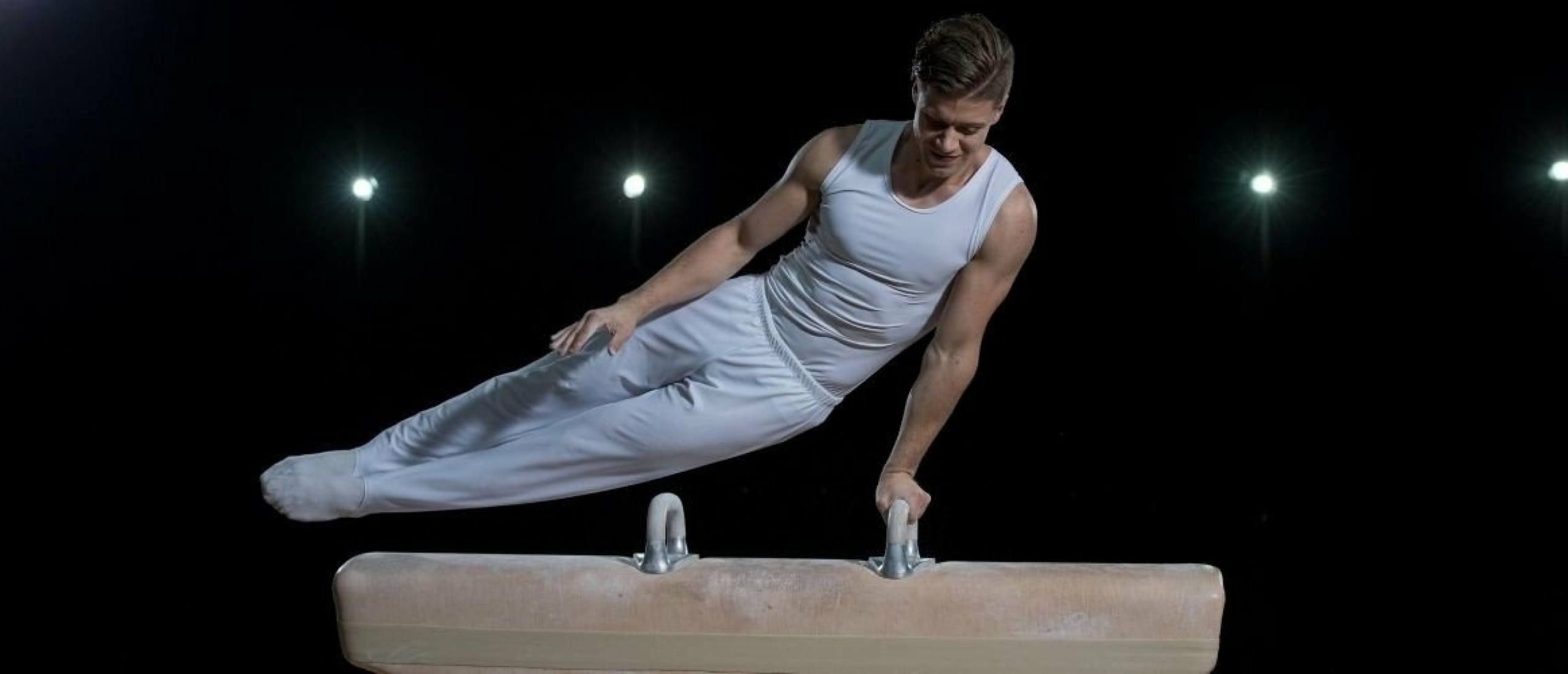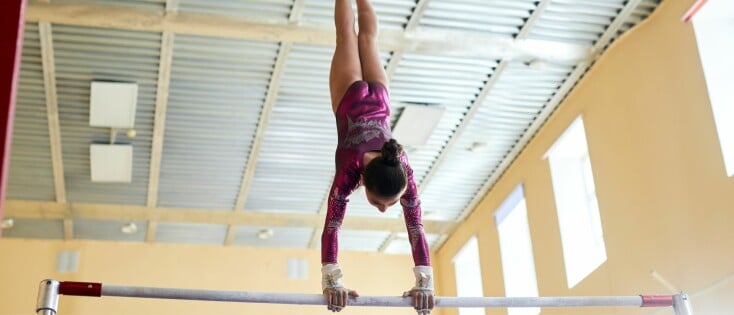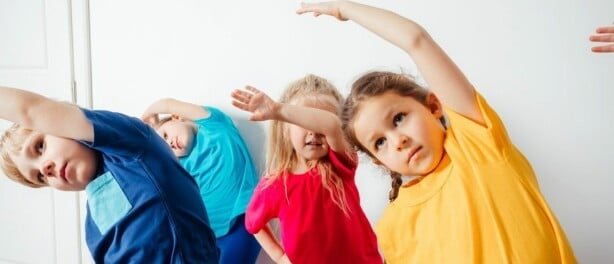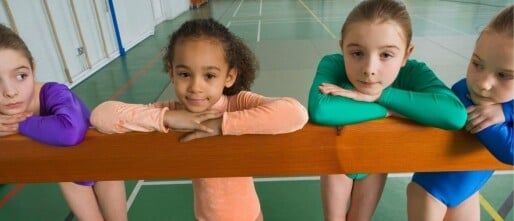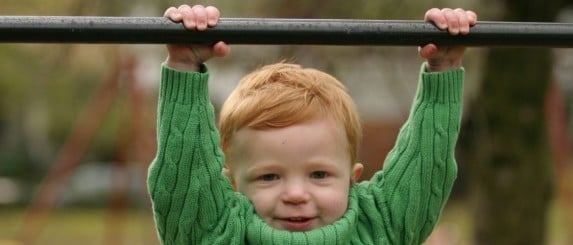Here I am again! In this blog I will give some general tips and information about the boys gymnastics. Which apparatuses are practised, and which elements do they train on? Boys gymnastics is practiced on six apparatuses: mat (free exercise), horizontal bar, parallel bars, still rings, jump and pommel horse. Below I will explain a specific part of each apparatus. The apparatuses that will be discussed are still rings, parallel bars and pommel horse.
Rings at boys gymnastics
Swinging at the rings is difficult because your swing is at two points, the rings around the suspension point and you yourself around the place where you hold the rings. Squeeze strength in the hands and strength in the shoulder girdle are very important in boys gymnastics.
From a good swing, you can then do items such as
: - folding hang | reverse hang | inloque | disloque
Points of attention
- Keep your body tense and stretched (front flattened and back slightly stretched
).
- In the front swing look at your toes and in the back swing look straight under you at the mat/
Bridge equal girders
The support swing in the bridge is a part that requires a lot of muscle power and coordination in the shoulder girdle. Various preliminary exercises are therefore of great importance in boys gymnastics. For very young children the distance between the bridge beams may still be too great, in which case you can place two cabinets or parts of cabinets right next to each other. As good support is very important for swinging in the bridge, you can do nice support forms with or without the bridge as preparation.
https://youtu.be/Zw3q5nsza-A
Without bridge -
In pairs, face each other in a lying position: try to pull an arm away from each other. Who will stay in the lying position the longest?
- Wheelbarrow walk
Points of attention
- Make an active stretching support | In the back and front swing your body is flattened | In the back swing you look at the ground -
In the front swing you look at your toes | Make sure you have good form tension
Bucket circles at boys gymnastics
Horse pommel horse is a discipline for which good support is necessary. In addition to the many swinging parts, circles is one of the basic parts that is performed in many variations on the pommel horse. Just as with the bridge swing, many forms of support precede circles swing:
- Lie on the floor: while keeping the feet in place, walk a circle with the hands.
- In back-to-back lying support: by putting your weight on one hand (try to shift your weight)
- In back support: now turn around with the feet while keeping the hands in the same place.
Before you can start circles on the pommel horse, there are a number of aids to practising circles, such as
:- A bucket on a rope hanging from a ring-
A mushroom
Points of attention:
- With socks in the bucket | Legs, toes must remain stretched | With a stretched body let the bucket go round. | Hands should be in the same place as much as possible.
Scissors
Jumping in boys gymnastics
What is actually meant by jumping? Jumping in gymnastics usually means jumping on an apparatus. However, we also know jumping with, for example, the mini-tramp.
We can jump using various materials
: - Springboard | Mini trampoline | Double mini trampoline | Trampoline | Tumbling track | Airtrack
In addition, you can jump on or over various apparatuses. The most common devices which are used to jump on or over are
:- The jumping box | The horse | The table | The buck | The pegasus
We can divide the jumping into free jumps and support jumps. Free jumps means that you do not touch any piece of equipment after you have landed on the mini trampoline. Examples of free jumps are: the stretch jump and a somersault. With support jumps, you still touch a piece of equipment after taking off from the springboard or the minitramp. For example, when jumping with the cupboard, we speak of a squat jump or a handstand transfer.
A jump can be divided into a number of phases. The following phases can be distinguished in the free jumps
: - Run-up and jump-off | The push-off from the mini-tramp | The whipping phase | The landing
Important in support jumps
There are a number of things you need to know about jumping in boys gymnastics. The jump to the plank is different from the jump to the mini-tramp. With the mini-tramp you jump with a curve and the jump is shorter. With a springboard, the jump is long and flat.
The landing is actually the most important part of a jump. A good landing often means that the jump was also good. What does a good landing look like? -
Feet on hip-width | Landing cushioned by bending in ankle, knee and hip joint | Back slightly arched -
arms diagonally in front, slightly to the side | You can stand (still) for a few seconds.
Points of attention
- Jumping into the mini trampoline in an upright position | Not bending the knees too much. | The first step is to jump with the
arms upwards out of the mini trampoline.
Support jumps
Of the support jumps, we will deal with two common jumps that are often used in boys' gymnastics: the squat jump using the cupboard or horse, and the spread jump over the stoop.
It is very important that the child is able to support itself well. All kinds of supports, such as weaving jumps, hazel jumps, squat jumps, jumps over benches or wheelbarrow runs, are a good preparation. We choose to start with the staggered jump. Children do this in the schoolyard in a playful manner and unconsciously get to know the approach, push-off and support phases.
The choice can be made to jump from a mini trampoline or from a reuther board. This depends on the group and the objective. We choose to start by teaching boxing with the reuther board.
Points of attention
- Accelerated run-up | Jump far and low for the reuther board | Put your hands on the back of the device -
Keep brief contact with the device (push off/off) | Look at the wall in front of you (torso remains upright)
Trapeze swing
Trapeze swinging is an element that immediately brings the circus to mind. But you can also swing on the trapeze in a gymnasium. You don't need much: a number of trapeze sticks. If you hang these from the rings, you can swing on the trapeze.
Trapeze swinging can be divided into
: - Swinging into support: Before swinging into support, you must first be able to support yourself well. When the pole is at about chest height you can jump up into support. - Swinging in suspension: For example from a box to the landing mat, or from a box to another box.
When you can support yourself well in the swing, you can do parts to get into support: e.g. the chest turn, or to get out of support: e.g. dive forward or make a kind of somersault in the front swing.
Trapeze swinging, just like ring swinging, requires clear safety measures. When working from an elevation, the distances between the suspension point and the elevation and between the suspension point and the landing point must be carefully chosen. In trapeze swinging, we distinguish between swinging, supporting swinging and hanging swinging. Suspended swinging is close to the 'real' circus work.
Waving rings
When learning how to swing in the rings, it is important that the student discovers the tempo and rhythm of the swing. The focus is on being long in the hang, swinging the legs up in the front and back swing and making a two-pass rhythm under the suspension point. With ring-swing you can reach great heights. During gymnastics on this apparatus, we ask you to pay extra attention to: a good organisation and safety.
Points of attention
- Ensure a calm working atmosphere | Working method 'command' | Place the children on the correct length in advance | Make groups of at least 3 children -
Keep an overview | Tight organisation (1,2,3 a START) | Short leg swings | Swing with the face away from the group |
Mats at least on the landing places | Help each other out | Teach the jump-off as quickly as possible
Rolls
Rolling is a movement in which you rotate around your width axis. You can roll forwards, backwards and sideways on different apparatuses. Rolling on the mat is the basis, after which you can continue rolling on the beam (for girls) or the bridge (for the boys).
The roll has some affinities with the somersault. If learning the roll goes wrong, learning the somersault becomes even more difficult.
What rolls best? A ballWhy
?
Because a ball is round on all sidesWhen
does something start rolling? When a ball is set in motion by something else, e.g. by kicking it, or by itself when it is unbalanced, e.g. from a sloping surface.
General rules for learning the roll are to use soft sloping surfaces that become less and less sloping and harder.
Points of attention
- Pull your knees up next to your ears | Try to get your hips loose from the mat | Keep your heels against your buttocks. | When coming up, put your hands forward.
Roll backwards
In the backward roll, the head is the biggest obstacle, it is in the way, as it were. The student will have to push himself over his head. The position of the student's hands is important here. The hand placement is above the head with the hands forming a 'roof'. The fingers point towards each other and the elbows are turned outwards. This is a better starting position to eventually achieve the prop roll.
Salto
The somersault is a difficult part to perform in boys gymnastics, and it is also difficult to provide help or catch. There are many different ways to learn a somersault (forward or backward) and ways to give help. Assisting with the somersault without apparatus help may not be done without an experienced leader.
Small and medium-sized circles
A circle turn is a movement in which you turn around your width axis with the device as rotation axis. There are three types of circular turns, of which we will only discuss the first: small turns where the hip is close to the stick during the turn. E.g. the chest turn and the belly turn. Medium-sized turns where the hip is further away from the stick. For example, the sole turn. Large turns where the hip is at the maximum distance from the stick.
Medium-sized turns: the under turn (under jump)
In order to make an under turn, the children must have experience with simple hanging, swinging and turning forms. For example: from a support, tumble forward to a hang. It is a swinging/turning movement in which the arms are always stretched out. The stick/beam must be at eye level. During the movement, the hips must be as high as possible (height of the stick/leg).
Variations at the bottom turn are:
- One-legged deposit
- Two-legged push-off
- An element before, e.g. a chest turn or a belly turn
- Extend with a half turn at the end of the movement
Points of attention (chest upwards)
- arms bent and kept bent | stay close to the stick | bring hips/belly towards the stick | kick the legs over the stick | keep looking at your toes

